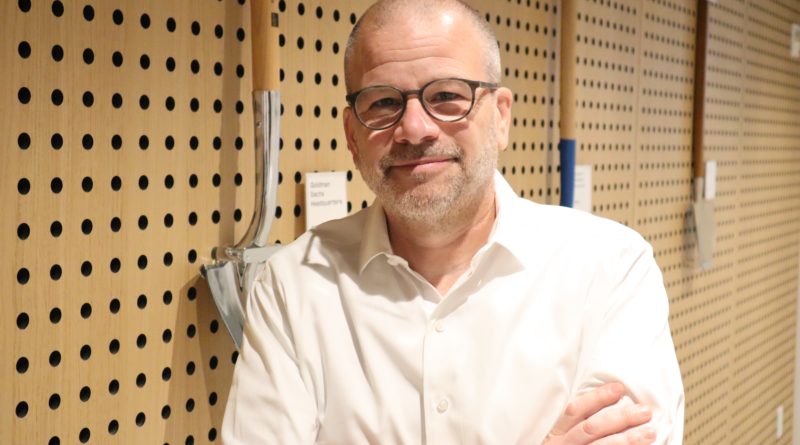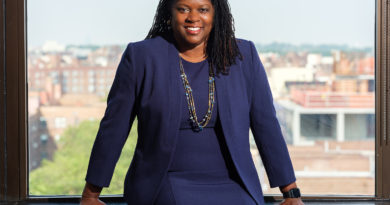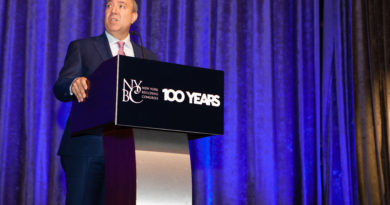Thoughts on the future of NYC redevelopment
By Daniel Offner
Andrew Kimball was appointed President and CEO of the New York City Economic Development Corporation in February. Since then, he has been working with the Eric Adams administration on its 70-point economic blueprint toward helping the city’s trillion-dollar economy recover from the impact of the COVID-19 pandemic.
“The good news is while New York City lost the most jobs during COVID of any city, it’s growing them back at a faster clip the most up than most other cities,” Kimball said. “But we have a ways to go. And you know, there are still real issues that we need to address.
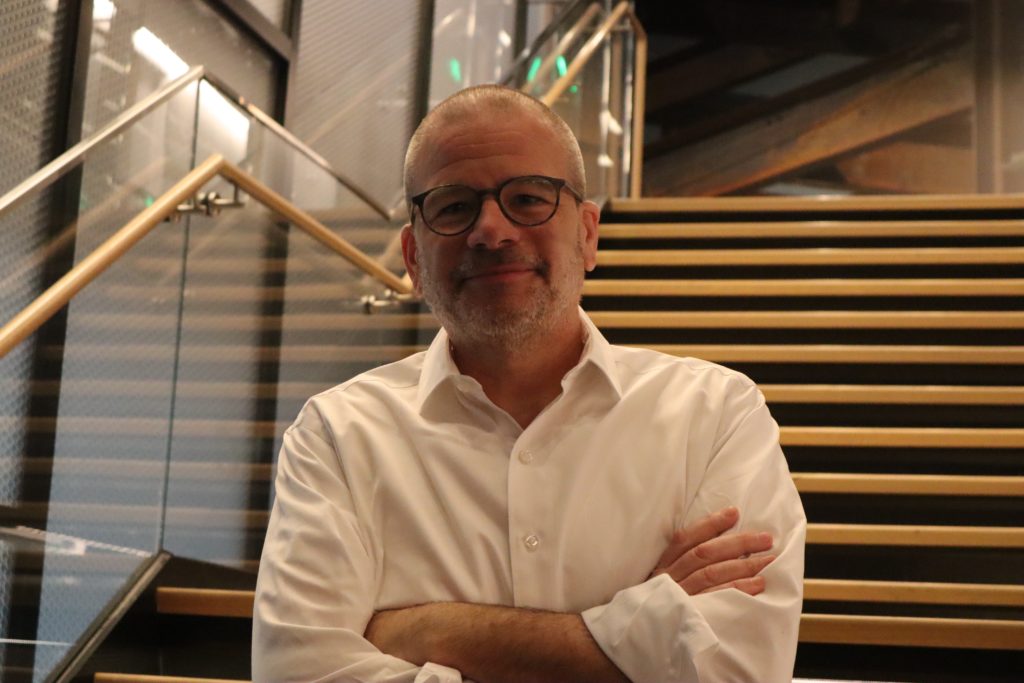
As the head of the nonprofit corporation, he oversees approximately 66 million square feet of city-owned property, which can be leveraged to help create good jobs and drive growth ensuring equitable and sustainable growth across the five boroughs. This includes work to introduce innovative new green energy supplies such as offshore wind, promote growth in the already burgeoning tech sector, and creating new, high-paying jobs for local school students.
Prior to ascertaining his role as head of the EDC, Kimball worked on an eclectic mixture of public-private partnership projects focused on urban transformation. He spent a long stint helping rebuild the branch library system with the New York Public Library. He also helped lead the city in its bid for the 2012 games. He said that simply by bidding, it led to the fast-tracking of the timeline on really key development projects, all of which have continued to have a positive impact on the city and its economy.
“From the rezoning of the far west side to the Brooklyn waterfront, to new stadiums for both the Mets and the Yankees, to new parks, like the Highline or the Brooklyn waterfront parks that were built,” he said. “These projects still would have gotten done, but they happened on a much faster timeline because of the importance of showing that we could move full projects forward in New York City.”
His efforts helped facilitate Barclays and Atlantic yards, and projects like Queens West along the Long Island City Waterfront.
After that he became President and CEO of the Brooklyn Navy Yard, where he helped lead the redevelopment of the 300-acre facility, which he said, “had long been a backwater.”
“It still had barbed wire on all the fences when I got there. And over an eight-year period, we transformed it into a national model for sustainable industrial redevelopment, advanced manufacturing, integration with the neighborhood on workforce development initiatives in particular, and bringing lots of new dynamic businesses there while restoring a lot of spectacular old buildings. Some of which date back to the civil war, but mostly WWI and WWII vintage.”
Kimball left the Navy Yard after eight years, going fully into the private sector for the first time. In 2013, he became CEO of Industry City in Sunset Park, Brooklyn, where he helped launch a 12-year, $1 billion redevelopment aimed at creating 20,000 new jobs through a mixed use blend of innovation economy and modern manufacturing, retail, and academic uses.
“The goal was to see if, without any public subsidy, the private sector could do a similar redevelopment where you took old underutilized industrial buildings and made them a hub of innovation economy activity,” Kimball said.
By the term, “Innovation Economy,” Kimball is referring to a broad range of making a physical, digital, or engineered product. This touches on advanced manufacturing, creative/design, and technology.
“What we really went after was creating an ecosystem of small businesses and making it a place where really small startups and small companies would want to grow together and be in a place where they could be in constant interaction with other tenants and be connected to the communities surrounding them,” Kimball said. “Because there was a real interest in not only developing green products close to their homes but being a source of job opportunity for the local communities they were based in.”
During his nine years at Industry City, they spent about $450 million on revitalizing the buildings’ basic infrastructure and investing alongside their tenants. It created close to 8,000 new jobs and a thriving community of entrepreneurs which has continued to grow.
“When I had the opportunity to come here [to the EDC], I jumped at it. The only answer was ‘yes.’ Just to have the opportunity to impact the broader economic development portfolio in the city and work for a Mayor like Eric Adams, who understands that if the city’s gonna recover in a robust way public-private partnerships need to be embraced,” Kimball said. “We need to be the ally of the private sector, not the enemy. We need to continue to drive growth sectors in the city. Really that’s the broad range of tech-enabled industries. Whether it’s film and television, video gaming, advanced manufacturing, biotech, FinTech, or green tech/Cleantech.”
He explained, “we need to make sure as the economy recovers that we build that new economy for the future in a way that is as inclusive and equitable as possible. We spend a significant amount of time here on every deal that we make, making sure there are social impact elements to it that might lead to M/WBE contracting or BIPOC entrepreneurship, or creating a talent pipeline from DOE to CUNY into those sectors of today in the future.”
Kimball said his goals are aligned with the bluprint laid out by Mayor Adams, which includes 70 initiatives aimed to drive economic recovery. One of these initiatives includes investing $200 million in offshore wind, both in port infrastructure and the creation of a supply chain for the industry, which will ensure that as much of it is local green energy, and hopefully create opportunities for diverse entrepreneurs to get into that industry along the way.
Another big chunk of his work with the blueprint focuses on workforce development. This includes making sure that today’s public school students are getting trained to be bale to step into some of the high-paying jobs that will be created in the future.
“A very conservative estimate is that over the next 10 years, there’ll be 13,000 new jobs there,” he said.
Another growth sector the NYCEDC is focused on, both in the blueprint and in practice everyday, is biotech, where they have an over a billion-dollar ongoing investment in a range of tools aimed to drive the growth of the industry.
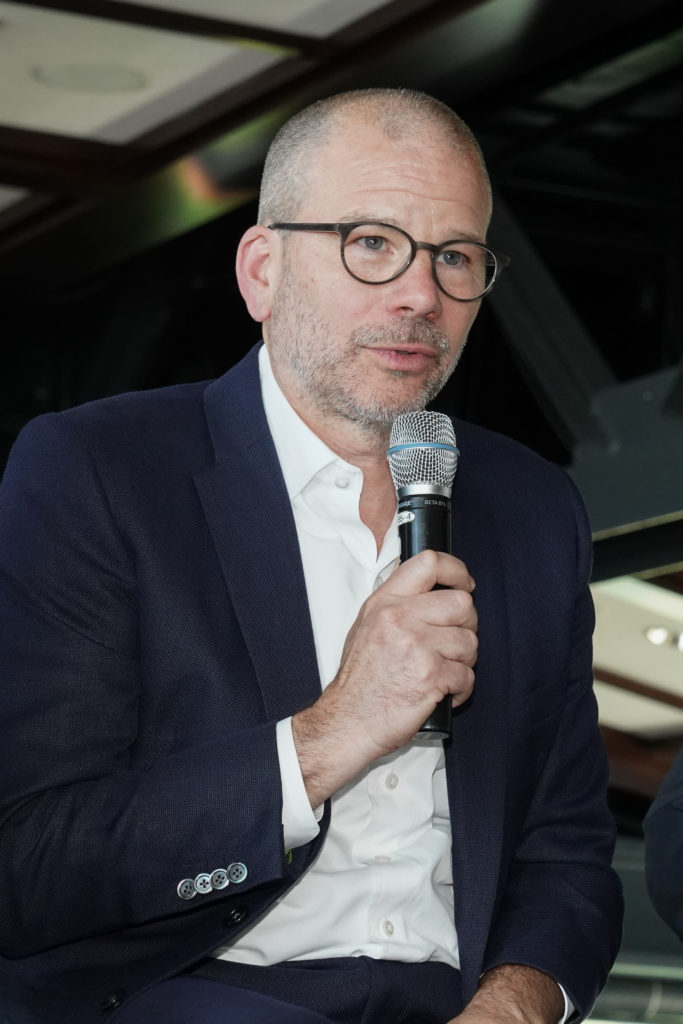
“If you look at the broader New York City region, it now eclipses San Francisco and Boston,” Kimball said. “Again, I’m talking regionally, city-to-city. We’re still behind Boston and San Francisco but we’ve got a lot of wind in our sails as it relates to biotech. And, you know, you see that in every borough. You see it Long Island City. You see it in the Bronx. You see it in Brooklyn. Obvious in Manhattan. There’s a real hub of it because of the ‘Eds and Meds’ along First Avenue.
Kimball said that in the biotech sector alone, they will easily generate 40,000 jobs in the next 10 years. Film, television, and video gaming are another industry EDC has its focus on.
The EDC wants to make sure that in every place-based project, there are not only strong links to the local leadership and workforce development organizations and community groups, but also to local public schools and CUNY colleges throughout the city to make sure there is a clear pathway into these jobs.
One of the biggest projects the EDC are currently working towards is the creation of an offshore wind port facility, located at the 75-acre South Brooklyn Marine Terminal.
“It will be the largest port servicing facility in the United States, where all of the component parts for the wind turbines will be put into the water 30 to 50 miles offshore,” Kimball said.
The offshore wind project, which is being executed by a partnership with Equinor and BP, aims to connect these big wind turbine propellers with Boeing 747 wingspan to a substation on land that will help fill the grid with green, clean energy.
Another major project focuses on food security and distribution. Hunts Point food market in the Bronx is a critical facility, where according to Kimball, 25 percent of everything we eat comes through. That amounts to roughly 4 billion tons of food a year.
“But the food distribution center is a really decrepit facility with significant environmental hazards. There are over 900 trucks that idle all day on fossil fuel generators,” Kimball said. “So the mayor announced a hundred million dollars for the Hunts Point market that we hope will leverage a significant multiple of that in other public and private dollars to redevelop distribution center.”
Hunts Point is a critical facility with more than 8,000 union employees. Kimball said that the plan is to make it green and resilient for the future.
“Everywhere where we control assets, we’re trying to drive jobs and economic activity in the sectors of today and tomorrow,” Kimball said. “A great example is the South Brooklyn Marine terminal. That’s gonna be the nation’s largest wind port. Right next door to that Steiner is doubling in size, creating a vast film and television studio complex. A little bit further south in the Brooklyn army terminal, you see a lot of manufacturing, particularly advanced manufacturing using new technologies… Hunt’s point similar story. Physical assets need to be upgraded in a critical sector for today’s economy and the future economy. We are also partnering smartly with agencies the city’s Department of Citywide Administrative Services to drive commercial development. With the CARE (City Agencies Revitalizing the Economy) program, we think there’s an opportunity to work with other agencies and academic institutions like CUNY to really capitalize on real estate and connect industry to to educational pathways.”
For more information about the New York City Economic Development Corporation and strategies towards building a sustainable and inclusive economic future for the city, visit https://edc.nyc.

